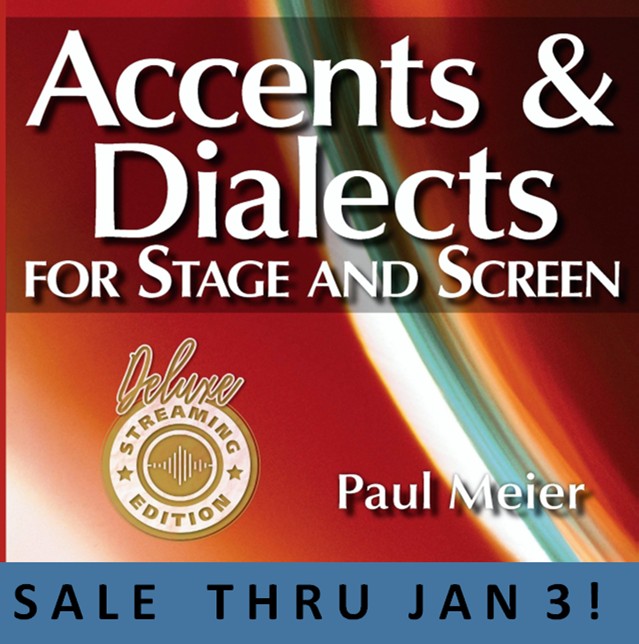Michigan 7
Listen to Michigan 7, a woman from Dearborn, Michigan, United States. Click or tap the triangle-shaped play button to hear the subject.
Both as a courtesy and to comply with copyright law, please remember to credit IDEA for direct or indirect use of samples. IDEA is a free resource; please consider supporting us.
BIOGRAPHICAL INFORMATION
AGE: N/A
DATE OF BIRTH (DD/MM/YYYY): 1976
PLACE OF BIRTH: Dearborn, Michigan
GENDER: female
ETHNICITY: Caucasian
OCCUPATION: actor
EDUCATION: N/A
AREA(S) OF RESIDENCE OUTSIDE REPRESENTATIVE REGION FOR LONGER THAN SIX MONTHS:
Subject has lived near Detroit her entire life.
OTHER INFLUENCES ON SPEECH: N/A
The text used in our recordings of scripted speech can be found by clicking here.
RECORDED BY: Cynthia Blaise
DATE OF RECORDING (DD/MM/YYYY): N/A
PHONETIC TRANSCRIPTION OF SCRIPTED SPEECH: N/A
TRANSCRIBED BY: N/A
DATE OF TRANSCRIPTION (DD/MM/YYYY): N/A
ORTHOGRAPHIC TRANSCRIPTION OF UNSCRIPTED SPEECH:
Uh, I was born in Dearborn, Michigan, which is a suburb of Detroit, Michigan. Um, my parents were both born and raised in Dearborn, Michigan, and I grew up in Livonia, Michigan, which is also a suburb of Detroit. It’s a west suburb of Detroit. Um, I went to grammar school and middle school and high school in Livonia, and I lived there when I went to Wayne State, which is in Detroit, Michigan, and I lived in Livonia until I was 23, and then I moved to Detroit, Michigan. And I’ve been living in Detroit ever since then. And I’m now 24 years old. Um, my grandparents … My, my mother’s grandparents were uh, my — my mom’s mother was born in Detroit, Michigan. Um, my grandfather — uh, my mother’s father was actually born in, uh, Utah, oddly enough. And, uh, my, my other two grandparents, my, my father’s parents, I’m not quite sure where they were born. I know they were born in the United States, but I don’t know if they — what part of the country that they were born in. Yeah, my dad grew up, uh, from a really early age playing hockey in Dearborn, Michigan. And, uh, when I was about 3, and had been walking for a while, but my dad had me on skates, and I was about 3 years old. And when I was about 4 or 5, I started playing hockey in a co-ed, and on a co-ed hockey team in Livonia, Michigan. And, uh, after about maybe a year of that, if that, my mom was very afraid I was gonna get hurt, and so I started figure skating. And I figure skated from the time — I — I started competitively figure skating when I was about 5, and I skated competitively till I was about 14 or 15, about that …
TRANSCRIBED BY: Jacqueline Baker
DATE OF TRANSCRIPTION (DD/MM/YYYY): 20/02/2008
PHONETIC TRANSCRIPTION OF UNSCRIPTED SPEECH: N/A
TRANSCRIBED BY: N/A
DATE OF TRANSCRIPTION (DD/MM/YYYY): N/A
SCHOLARLY COMMENTARY:
This young woman demonstrates speech tendencies that are fairly common in the Detroit area. This is the practice of producing rather tight vowels and diphthongs, especially preceding the “r” consonant. This quick, tense quality is demonstrated in “strikes,” “two ends,” “Dearborn,” and “grandparents.” The diphthongs in “five, four” and “about” are somewhat abbreviated, with the later sounding like our Canadian neighbors. The “a” in “father” is a front vowel, and the “a” in “and” is the flat, rear placement heard so often in Michigan dialects across the state. Listen for the hard “r” in “hurt” and “arch,” and notice how it imposes on the preceding vowel. The “honest” vowel in “hockey” is a front vowel. The “y” ending in “twenty” is a long “e” (as in, me), and the vowel in “three” is somewhat tight. Interestingly, the final voiced consonant in “and” is pronounced as its voiceless cognate, so that “and” becomes “ant,” which is not at all unusual.
COMMENTARY BY: Cynthia Blaise
DATE OF COMMENTARY (DD/MM/YYYY): 2000
The archive provides:
- Recordings of accent/dialect speakers from the region you select.
- Text of the speakers’ biographical details.
- Scholarly commentary and analysis in some cases.
- In most cases, an orthographic transcription of the speakers’ unscripted speech. In a small number of cases, you will also find a narrow phonetic transcription of the sample (see Phonetic Transcriptions for a complete list). The recordings average four minutes in length and feature both the reading of one of two standard passages, and some unscripted speech. The two passages are Comma Gets a Cure (currently our standard passage) and The Rainbow Passage (used in our earliest recordings).
For instructional materials or coaching in the accents and dialects represented here, please go to Other Dialect Services.
 IDEA: International Dialects of English Archive
IDEA: International Dialects of English Archive




